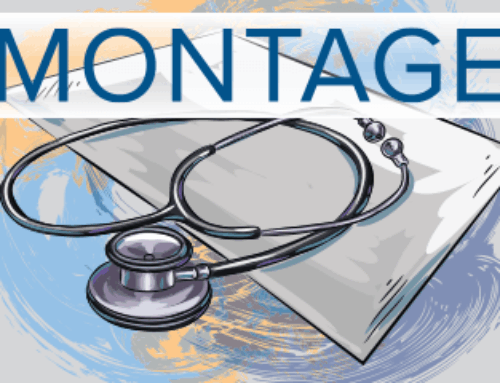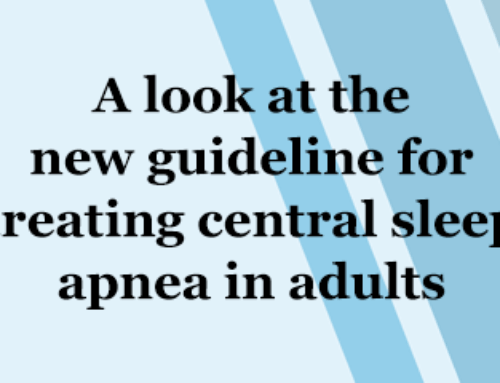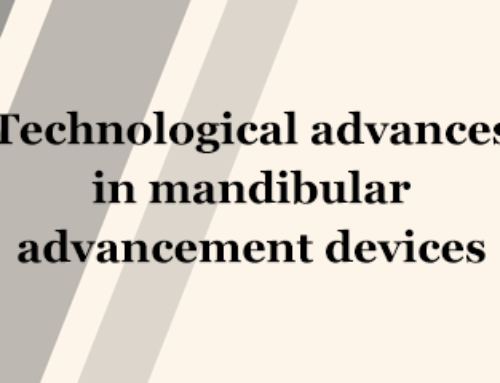Sachin Shah, MD, MS; Sharon Schutte-Rodin, MD, DABSM, FAASM; Shalini Paruthi, M.D.; Ambrose Chiang, MD, FAASM; Makayla Cordoza, PhD, RN, CCRN-K; Kevin Gipson, MD; Evin Jerkins, DO; Eric J. Olson, MD on behalf of the AASM Emerging Technology Committee
The AASM recommends clinicians use cognitive behavioral therapy for insomnia (CBT-I) as first-line treatment for chronic insomnia in adults.1 While CBT-I delivery can vary by type, both individual/group on-site delivery and telehealth CBT-I have shown greater therapeutic effects than guided and unguided internet CBT-I.2 When CBT-I access at sleep centers is limited (e.g., no on-site or local CBT-I resource, extended wait list), administration of digital CBT-I (dCBT-I) through websites and downloadable applications (apps) followed by therapist-delivered CBT-I is suggested.3,4 This article aims to provide AASM members (1) a better understanding of the currently available dCBT-I technologies, and (2) familiarity with online insomnia programs to possibly discuss with patients.
Evidence-based, comprehensive dCBT-I programs employ combinations of sleep hygiene, sleep restriction, stimulus control, relaxation therapy/mindfulness, and cognitive therapy over several weeks. There are three main platform modalities: (1) self-guided platforms with unrestricted access to app features that may or may not provide guidance or recommendations of a course plan; (2) automated guidance platforms that unlock app features as milestones are achieved at a pre-set pace (AI may be used to tailor recommendations); (3) auxiliary platforms designed to be used in conjunction with sleep providers or therapists at their discretion, and may allow for a level of self-guidance. Table 1 highlights the components employed by various dCBT-I platforms, their duration, and how these subjects are taught.5
Limitations that providers should be familiar with include that nearly all current dCBT-I are in English and exclude: (1) children (except Night Owl and Sleep Easy); (2) patients with moderate to severe depression, bipolar disease, schizophrenia or who are pregnant (except Sleepio); (3) shift workers. Data privacy also varies among platforms. Platforms may/may not collect individual user data to tailor components of CBT-I, cross-sell internally, or be sold to other third parties.
When evaluating sleep technologies, clinicians should be aware that product claims may overstate evidence-based clinical outcomes for that specific product.5 Other than Somryst (formerly SHUTi) and Sleepio, most dCBT-I have few or no published studies, and only Somryst is currently FDA-cleared for dCBT-I. Somryst requires a physician prescription for access, and Sleepio is only available in the U.K. and select organizations.
Lastly, individual or combination components of dCBT-I treatments are marketed directly to consumers. These include relaxation apps and devices, interactive mindfulness activities via websites or apps, or sleep enhancers such as wearables and nearables. Some offer shorter, condensed brief behavioral therapy (BBT) and Acceptance and Commitment Therapy (ACT) options. Several non-specific anxiety and stress reducing online programs and apps (e.g., Headspace and Calm) claim to treat or improve insomnia. Several wearable devices (e.g., headbands, watches, rings) and nearables (e.g., light adjusting) provide consumers with sleep feedback, allowing patients to possibly improve their sleep-related behaviors. (Table 2).5 A select few dCBT-I work only in conjunction with devices, and some are simply devices that claim to improve sleep without employing dCBT-I methods.
In sum, dCBT-I can be a valuable supplementary resource when traditional CBT-I is unavailable. Additionally, consumers have access to a vast array of apps and devices purported to improve insomnia. Some of these are offered as independent self-help resources, while others are professionally or AI/ML guided, or offered as a hybrid support model. If used clinically, clinicians should familiarize themselves with costs, reimbursement, workflow integration, data access, security, and privacy policies. Providers should be cognizant of the ever evolving dCBT-I landscape as more research focusing on various patient populations, increasing patient adherence, tailoring treatments, and improving response rates is done.6 More detailed insomnia technology reviews can be found at #SleepTechnology, an online AASM member resource.5
Table 1: Examples of Digital CBT-I Platforms and Key Characteristics (Currently posted in #SleepTechnology)
| Platform | Operating System |
Type | Duration (weeks) |
Validation RCT# | CBT-I Components | Media |
|---|---|---|---|---|---|---|
| A Mindful Way | Web App | Automated | 6 | 1 | SR, RT/M, CT | Text, Video, Audio Guided RT/M |
| CBT I Coach | iOS/Android | Auxiliary, Self-Guided | N/A | 3 | SH, SC, SR, CT, RT/M, PR | Text, Audio, Guided RT/M |
| Full Sleep | iOS/Android | Auxiliary | 6 | 0 | SC, RT/M | Text, Interactive Texting, Audio Guided RT/M |
| Go! To Sleep | Web App | Automated | 6 | 3 | SH, SC, SR, RT/M, CT, PR | Text, Audio, Guided RT/M |
| Mayo Clinic Insomnia | Web App | Self-Guided | 5 | 0 | SH, SC, SR, RT/M, PR | Text |
| Night Owl Sleep Coach | iOS/Android | Self-Guided | 8 | 0 | Unclear | Text, Video |
| Pocket Kado | iOS/Android | Self-Guided | Unclear | 0 | Unclear | Interactive Game |
| Sleep Easy | iOS/Android | Unclear | 6 | 1 | SH, SC, CT, RT/M | Text, Audio Guided RT/M |
| Sleepio | iOS/Android Web App | Automated | 6 | 12 | SH, SC, SR, RT/M, CT, PR | Text, Video, Quizzes, Audio Guided RT/M |
| Sleep Reset | iOS/Android | Auxiliary | 8 | 0 | SH, SC, SR, RT/M, CT | Text, Interactive Texting |
| Sleep School | iOS/Android Web App | Self-Guided Auxiliary | 1-5 (Unclear) | 0 | ACT | Audio, Video |
| Somnio | Web App | Auxiliary | 8 | 2 | SH, SC, SR, RT/M, CT | Text, Video, Interactive Video |
| Somnus | Unclear | Self-Guided | Unclear | 0 | SH, SC, SR, RT/M, CT, ACT | Audio |
| Somryst | iOS/Android Web App | Automated | 9 | 15 | SH, SC, SR, CT | Text, Video, Quizzes |
| Stellar Sleep | iOS/Android | Automated | 2-12 (Unclear) | 0 | SH, SC, SR, RT/M, CT, paradoxical intention | Text, Audio, Guided RT/M |
| VA SleepEZ | Web App | Self-Guided | 4-6 | 0 | SH, SC, SR, RT/M, PR | Text, Video |
Table Key: RCT= Randomized Control Trial, SH= sleep hygiene, SC= stimulus control, SR=sleep restriction, RT/M= relaxation therapy/mindfulness, CT= Cognitive Therapy, PR=preventing relapse, ACT= Acceptance and Commitment Therapy. # Only randomized, multi-arm RCTs were included. Note: The authors have no affiliations with these technologies.
Table 2: Other Sleep Facilitation Apps and Devices (Currently Posted in #SleepTechnology)
| Type of Apps or Device | |
|---|---|
| Relaxation | Calm, Digipill, Dodow, Headspace, Moshi Twilight, Napflix, Pzizz, Sleep Genius, Sleepa, Sleepiest, Sleepzy, Slumber |
| Light Adjusting | Apple Nightshift, Ayo Glasses, EyeJust, Luminette, Ocushield, ReTimer |
| Sleep Facilitation- Related Wearables & Nearables | 2Breathe, Apollo Neuro, AlphaStim, BedJet, ChiliPAD, CES, Dawn House Bed, Dream Light Pro, DreamPad, Dreem 2 and 3, EBB Cool Drift, Homni and Terrailon Nearables, iSense SmartSleep Pillow, Ivy Kokoon Sleep Headphones, Modius (Shalini), Muse S, Nest Hub, Philips SmartSleep Deep Sleep Headband, Philips Smart Sleep and Wake up Light, Remee, Sleep as Android, Sleep Number 360 Smart Bed, Sleep Number Bed with Sleep IQ, Sleep Robot, SleepScore Max, SNOO Smart Sleeper, Somnee Headband, Somnofy, Somnox, Thim, Welt-I |
Note: The authors have no affiliations with these technologies.
This article appeared in volume nine, issue one of Montage magazine.
References
- Edinger JD, Arnedt JT, Bertisch SM, et al. Behavioral and psychological treatments for chronic insomnia disorder in adults: an American Academy of Sleep Medicine systematic review, meta-analysis, and GRADE assessment. J Clin Sleep Med. 2021;17(2):263-298. https://doi.org/10.5664/jcsm.8988
- Simon L, Steinmetz L, Feige B, et al. Comparative efficacy of onsite, digital, and other settings for cognitive behavioral therapy for insomnia: a systematic review and network meta-analysis. Sci Rep. 2023;13(1):1929. https://doi.org/10.1038/s41598-023-28853-0
- Manber R, Simpson N, Gumport NB. Perspectives on increasing the impact and reach of CBT-I. Sleep. 2023;46(12):zsad168. https://doi.org/10.1093/sleep/zsad168
- Riemann D, Benz F, Dressle RJ, et al. Insomnia disorder: State of the science and challenges for the future. J Sleep Res. 2022;31(4):e13604. https://doi.org/10.1111/jsr.13604
- American Academy of Sleep Medicine. #SleepTechnology. https://aasm.org/consumer-clinical-sleep-technology/
- Muench A, Vargas I, Grandner MA, et al. We know CBT-I works, now what? Fac Rev. 2022;11:4. https://doi.org/10.12703/r/11-4





